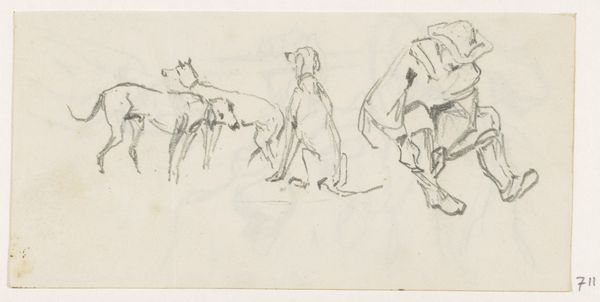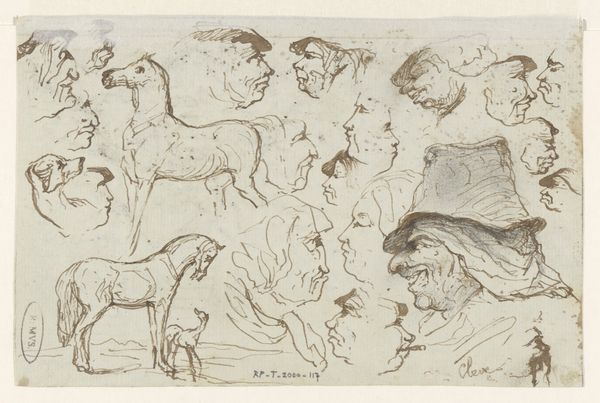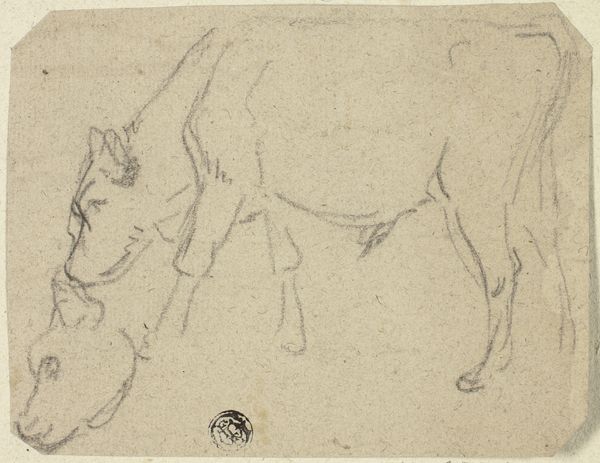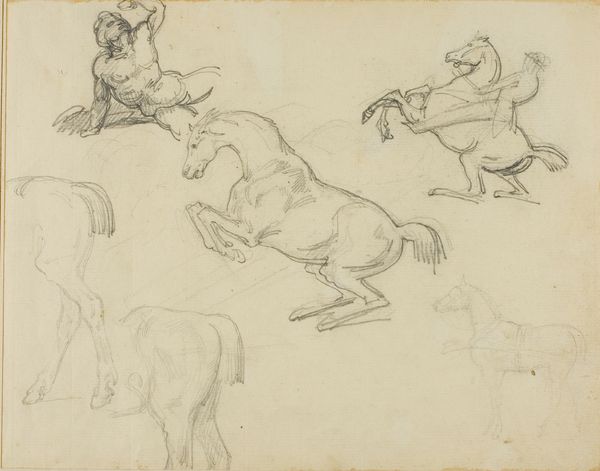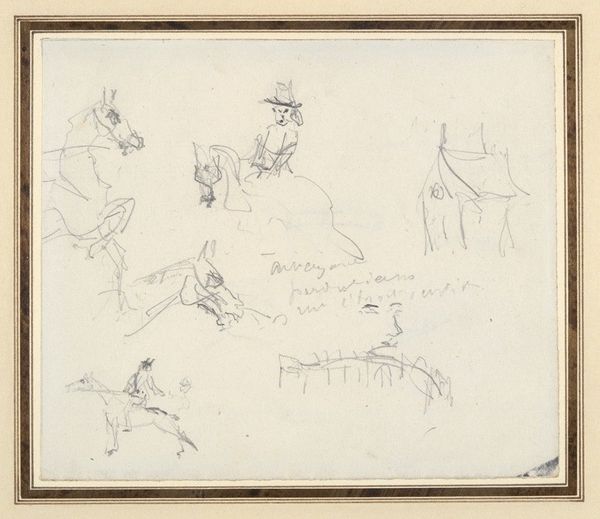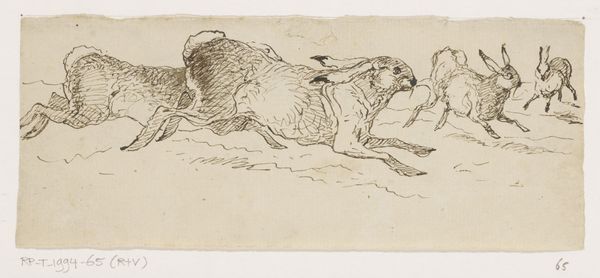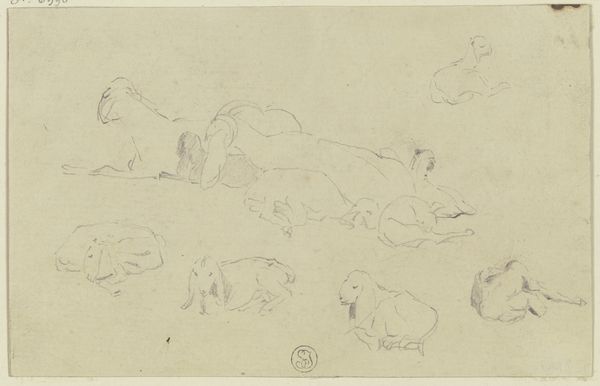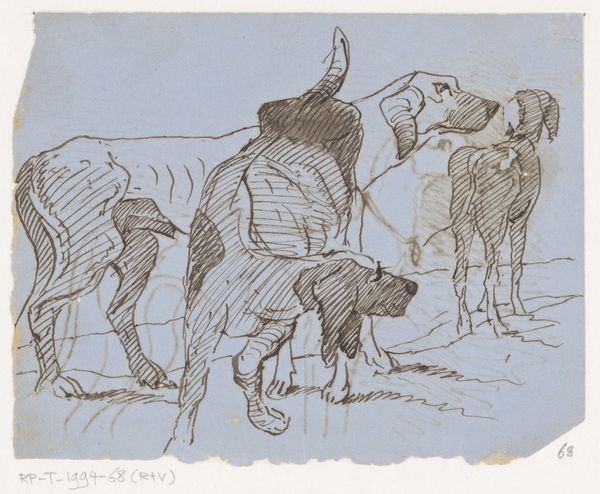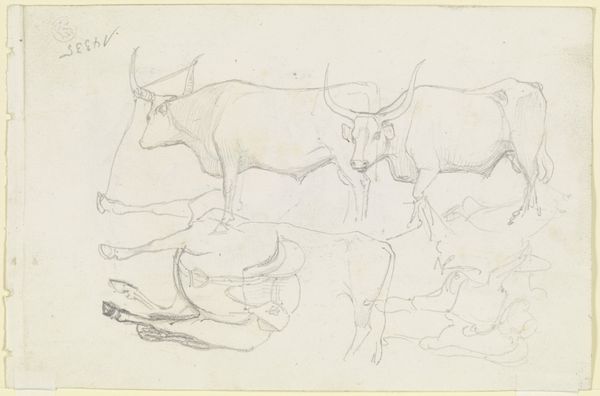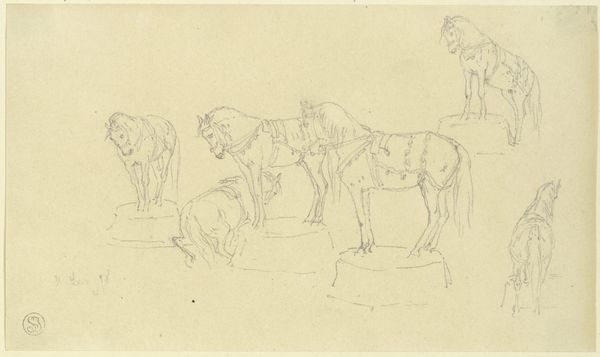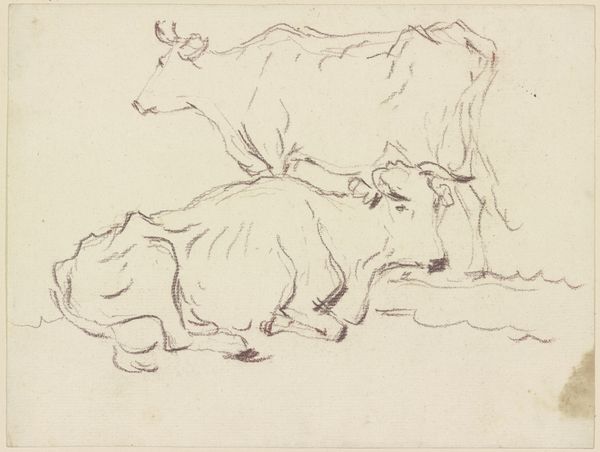
Dimensions: height 95 mm, width 112 mm
Copyright: Rijks Museum: Open Domain
Curator: Here we have “Paarden en koppen,” or “Horses and Heads,” a drawing attributed to Johannes Tavenraat. It's held here at the Rijksmuseum, and judging from the style, was likely made sometime between 1840 and 1880. Editor: Well, it’s… immediate. There’s a casual energy, like catching a glimpse into someone’s private thoughts. I find myself wondering about the stories these sketches hold, fragments of a world glimpsed through the artist's hand. Curator: Absolutely. It gives us insight into the means through which Tavenraat was exploring both animal and human form. Look at the swift pen strokes—they suggest the drawing was produced rather spontaneously. One might consider its use; Was it merely practice, or studies for larger, more formalized pieces? Editor: The horses feel so alive, despite the simplicity of the lines. Especially the one that's rearing—almost childlike in its rendering, with a human profile somehow incorporated! The material rawness makes it so appealing; there is an unpolished vulnerability, a glimpse behind the curtain of ‘high art,’ which often obscures the labor involved. Curator: Indeed. These rapid sketches, created in ink and pen, are clearly meant for preliminary work rather than exhibition. And the social context here is compelling. During that time, sketchbooks were crucial to artistic production, serving as a visual database for future works. The presence of human heads also suggests his focus on portraiture and the human condition alongside his study of animals. Editor: It feels intensely personal. It's almost like the faces emerging from the horse represent the soul trying to be expressed... but that’s just me getting carried away. Still, thinking of this drawing, tucked away in a sketchbook… that labor, that love of craft feels incredibly romantic, despite the rapidness of the drawing itself. Curator: Precisely, that duality captures Tavenraat's engagement with form. The convergence of Romanticism’s expressive freedom alongside structured artistic studies speaks to tensions between academic tradition and new, freer means of creation. Editor: Looking closer has definitely brought the piece to life. What I initially perceived as just a few quick sketches now appears a whole world! Curator: Agreed. A piece that seems simple on the surface actually reveals so much more on closer observation and thought.
Comments
No comments
Be the first to comment and join the conversation on the ultimate creative platform.

